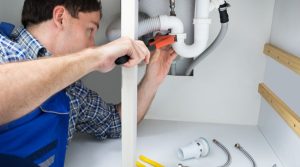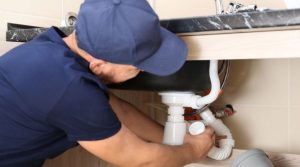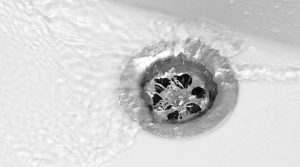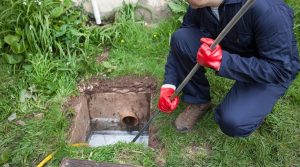When your plunger can’t clear a stubborn clog, a plumber’s snake may be your best DIY ally. This guide dives into the ins and outs of using a plumber’s snake to tackle even the most challenging blockages effectively and safely.
Key Takeaways
- Plumber’s Snake Basics: A versatile tool for clearing stubborn clogs.
- How to Use: Proper technique prevents damage and improves results.
- When to Call a Pro: Knowing when to enlist professional help saves time and prevents further issues.
What is a Plumber’s Snake?
A plumber’s snake, also known as a drain auger, is a flexible, coiled metal cable designed to dislodge blockages deep in pipes. Equipped with a handle and an auger head resembling a corkscrew, it can navigate twists and turns within your plumbing. Common lengths for household models range from 20 to 50 feet, making them ideal for residential use.
Step-by-Step Guide to Using a Plumber’s Snake
1. Preparation
Before you begin, gather these items:
- Old towels to catch spills.
- Protective gloves and clothing.
- An adjustable wrench if disassembling parts of the sink.
Optional but recommended: Remove the p-trap (the curved pipe under your sink) to access the drain more effectively.
2. Inspect and Clear the P-Trap and Trap Arm
- Loosen the p-trap with a wrench and clean out any debris.
- If needed, remove the trap arm, the pipe connecting the p-trap to the wall. Inspect it for blockages before proceeding.
3. Insert the Snake
- Feed the auger head into the open drain or wall access point.
- Slowly turn the handle to extend the cable.
- Avoid forcing the auger, as this can damage the pipe.
4. Break Through the Blockage
- Once resistance is felt, rotate the handle while gently pushing the snake forward.
- Work the head back and forth to loosen and remove debris.
- If you hear scraping, adjust the angle to avoid damaging the pipe.
5. Clean and Reassemble
- Retract the snake and clean off any debris.
- Reassemble the p-trap and trap arm, ensuring all fittings are secure.
6. Test the Drain
Run water to confirm the blockage has cleared. If the drain is still slow, repeat the process or consider calling a professional plumber.
Common Mistakes to Avoid
- Using Excessive Force: This can damage pipes or the auger head.
- Skipping the P-Trap Check: Many clogs are located here, making snaking unnecessary.
- Overusing the Snake: Repeated use can wear down pipes over time.
When to Call a Professional
If repeated attempts to snake the drain fail, it’s time to contact a professional. Experienced plumbers, like those at BJC Plumbers Jersey City, have specialized tools and expertise to address persistent blockages without causing additional damage.
FAQs
Q: Can a plumber’s snake damage pipes?
A: Yes, improper use or excessive force can damage pipes, especially older or fragile ones. Always use the tool gently and avoid aggressive pushing.
Q: What types of clogs can a plumber’s snake handle?
A: It’s effective against hair, grease, and other debris but may struggle with tree roots or hard objects.
Q: How do I know if the snake is the right size for my drain?
A: Choose a snake with a cable diameter appropriate for your pipes. For most household drains, a 1/4-inch or 3/8-inch cable works well.
Q: How often can I use a plumber’s snake?
A: Limit usage to avoid pipe wear. For recurring issues, consult a professional.
Q: What should I do if the snake gets stuck?
A: Stop turning the handle and gently pull the cable back. Avoid excessive force, which can worsen the situation.
Q: Can I rent a professional-grade auger?
A: Yes, heavy-duty drain augers are available for rent. However, they require proper handling and may be overkill for minor clogs.
Q: Is a drain snake better than chemical cleaners?
A: Yes, a drain snake is eco-friendly and less damaging to pipes compared to chemical drain cleaners, which can corrode plumbing over time.
Why Choose Professional Help
For complex or recurring blockages, professional drain cleaning services offer advanced tools like motorized augers and hydro-jetting to restore your plumbing system efficiently.
BJC Plumbers Jersey City specializes in fast, reliable solutions for stubborn clogs, ensuring your pipes are in top condition.
With the right knowledge and tools, a plumber’s snake can be a powerful DIY solution for clogged drains. But knowing when to call a professional is just as important to prevent costly damage and restore your home’s plumbing.







